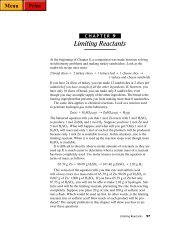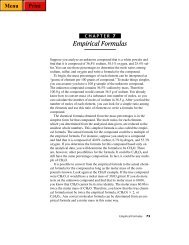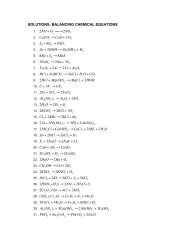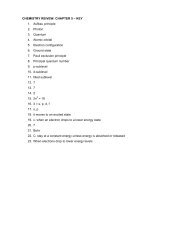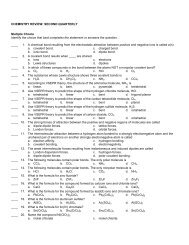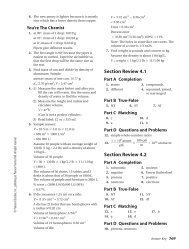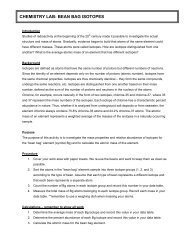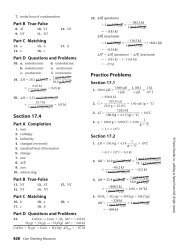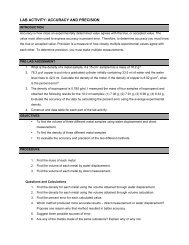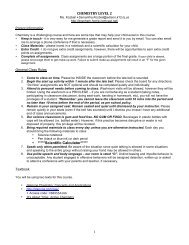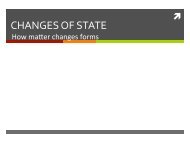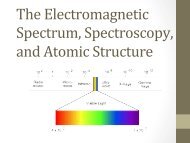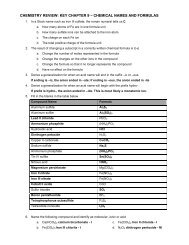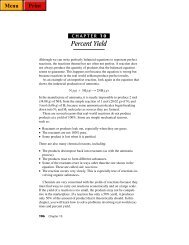Gas Laws
Gas Laws
Gas Laws
You also want an ePaper? Increase the reach of your titles
YUMPU automatically turns print PDFs into web optimized ePapers that Google loves.
According to Charles’s law, when the temperature of a sample of gas increases,<br />
the volume of the gas increases by the same factor. Therefore,<br />
doubling the Kelvin temperature of a gas will double its volume. Reducing<br />
the Kelvin temperature by 25% will reduce the volume by 25%.<br />
The expression V/T k means that the result of volume divided by<br />
temperature is a constant, k, for any sample of gas. If this is true, then V/T<br />
under one set of conditions is equal to V/T for the same sample of gas under<br />
another set of conditions, as long as the pressure remains constant.<br />
Charles’s law can be expressed by the following mathematical equation.<br />
V1 T1 V 2<br />
T 2<br />
General Plan for Solving Charles’s-Law Problems<br />
1<br />
Convert Celsius<br />
temperatures to<br />
Kelvin temperatures<br />
if necessary.<br />
Given three of the following<br />
four quantities:<br />
T 1 , V 1 , T 2 , V 2<br />
Rearrange the equation<br />
V1 T1 <br />
algebraically to solve for<br />
the unknown quantity.<br />
2<br />
An equation that can be used to<br />
calculate the unknown quantity<br />
It will be one of the following four:<br />
T2V1 T1V2 T1V2 T2V1 V2 , T2 , V1 , T1 <br />
T1 V1 T2 V2 3<br />
Unknown<br />
T or V<br />
V2 T2 Substitute each of the<br />
known quantities,<br />
and compute.<br />
Convert<br />
K to C if<br />
needed.<br />
Unknown<br />
t in C<br />
<strong>Gas</strong> <strong>Laws</strong> 121



